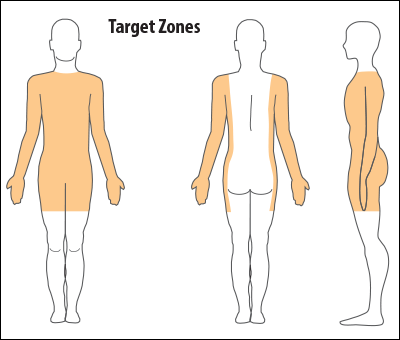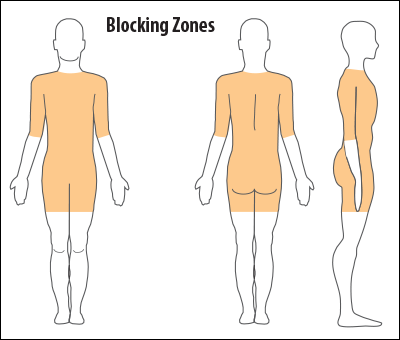The Rules of Flat Track Roller Derby
NOTE: You are viewing the March 1, 2014 revision of The Rules of Flat Track Roller Derby, which is officially retired.
The current version of the rules can be found at Rules Central.
Contact between opponents is limited to legal blocking zones and legal target zones.
4.2.2 - Illegal Target Zones: For safety reasons, a skater may not be hit in the following locations:
4.2.3 - Legal Blocking Zones apply to the body parts of the skater performing a block. Skaters may initiate contact with the following parts of the body:
4.2.4 - Illegal Blocking Zones: Apply to the body parts of the skater performing a block. Skaters may not initiate contact with the following parts of the body:

The shaded regions are the legal areas to block, hit, or check an opponent.

The shaded regions are the legal areas with which a skater can block, hit, or check.
©2014 Women’s Flat Track Derby Association (WFTDA). The Rules of Flat Track Roller Derby may not be reproduced or translated in whole or in part in any manner without the permission of the WFTDA.
Real. Strong. Athletic. Revolutionary.
Copyright © Women’s Flat Track Derby Association (WFTDA). Site by Spenlen Media.
All photos and content on this website are copyrighted by their respective creators. Please do not reproduce, print, or use any photos in any context without the express written permission of the WFTDA.